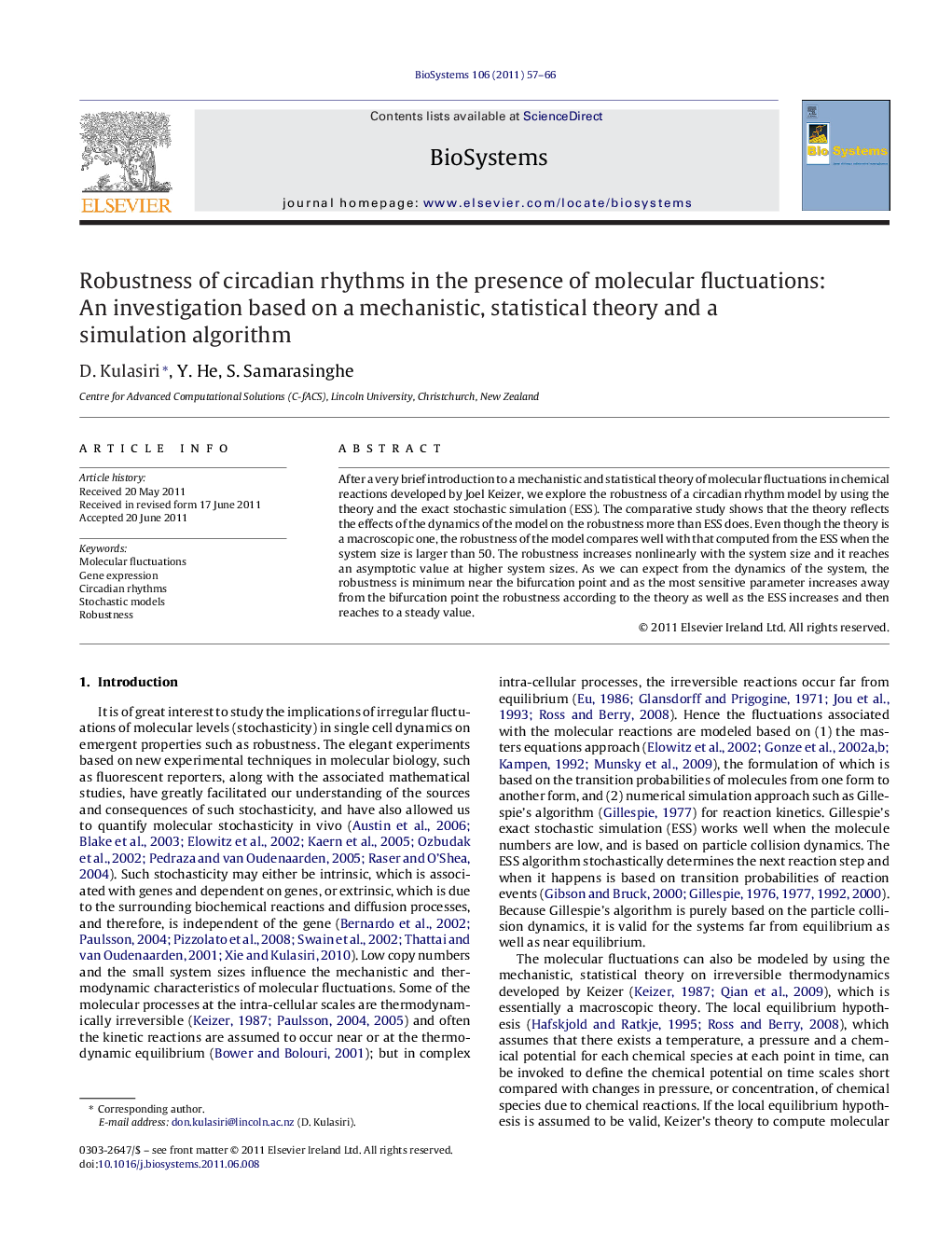| Article ID | Journal | Published Year | Pages | File Type |
|---|---|---|---|---|
| 2076161 | Biosystems | 2011 | 10 Pages |
Abstract
After a very brief introduction to a mechanistic and statistical theory of molecular fluctuations in chemical reactions developed by Joel Keizer, we explore the robustness of a circadian rhythm model by using the theory and the exact stochastic simulation (ESS). The comparative study shows that the theory reflects the effects of the dynamics of the model on the robustness more than ESS does. Even though the theory is a macroscopic one, the robustness of the model compares well with that computed from the ESS when the system size is larger than 50. The robustness increases nonlinearly with the system size and it reaches an asymptotic value at higher system sizes. As we can expect from the dynamics of the system, the robustness is minimum near the bifurcation point and as the most sensitive parameter increases away from the bifurcation point the robustness according to the theory as well as the ESS increases and then reaches to a steady value.
Related Topics
Physical Sciences and Engineering
Mathematics
Modelling and Simulation
Authors
D. Kulasiri, Y. He, S. Samarasinghe,
